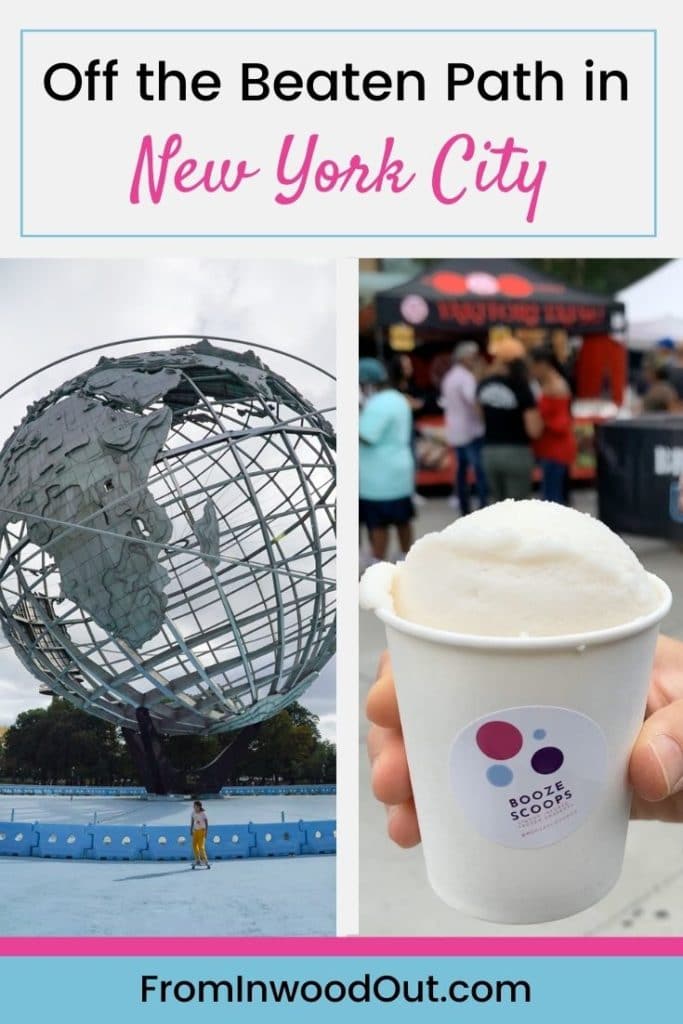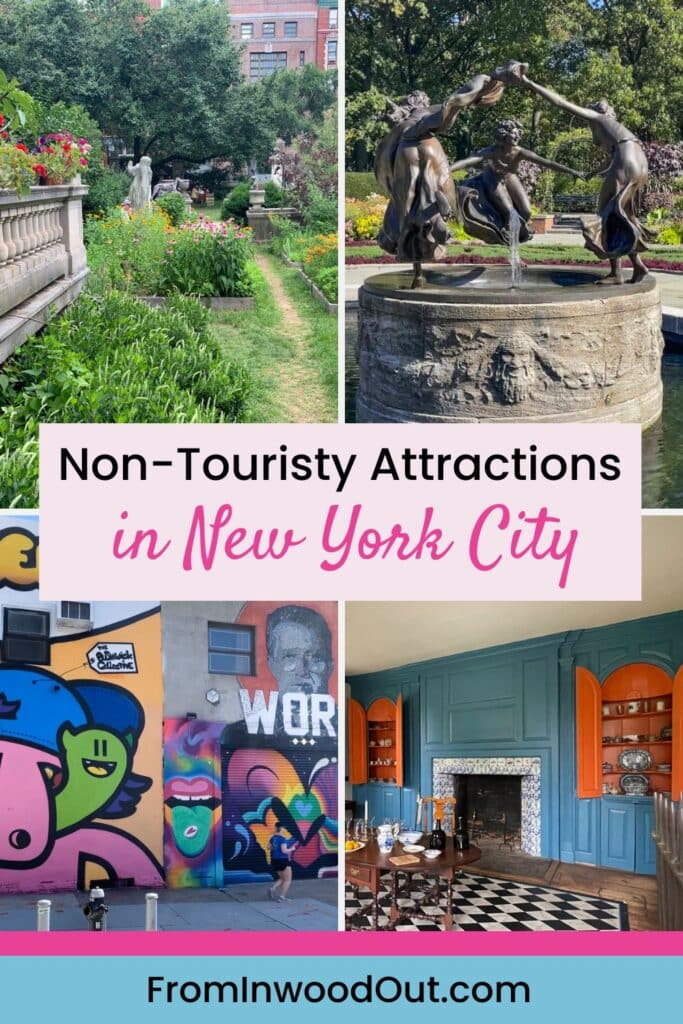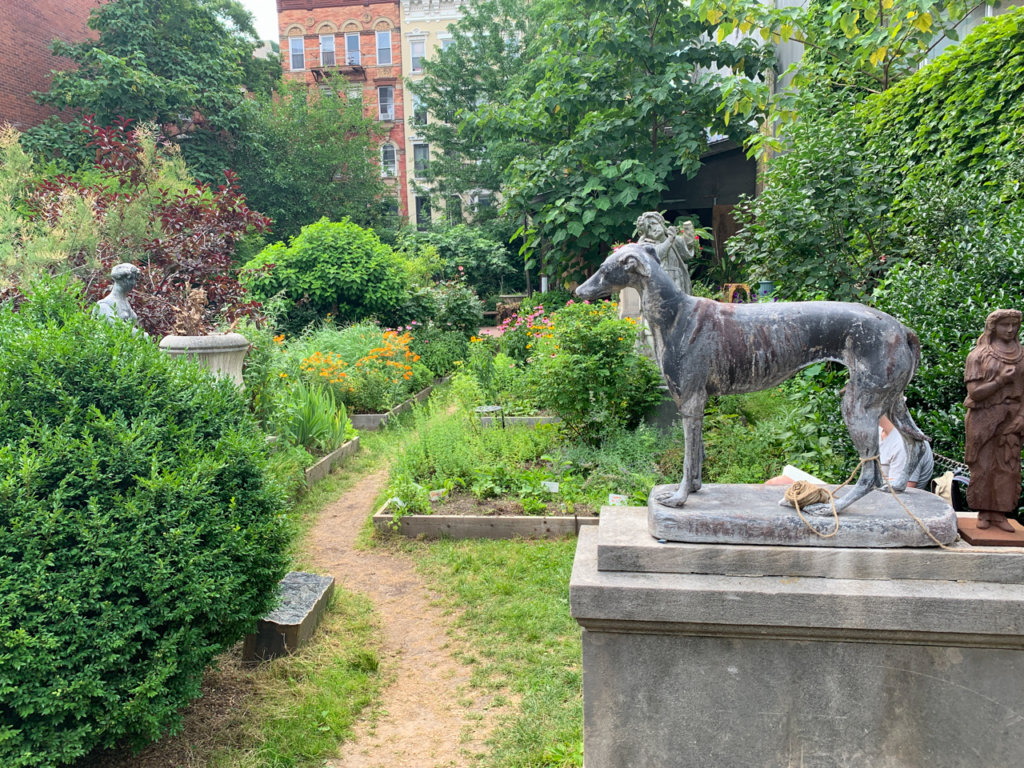
[Updated April 28, 2023] Are you ready to veer off the beaten path to find non-touristy things to do in NYC?
Of course, some attractions in New York City should not be missed. Everyone, for example, should lose themselves in the beautiful chaos of Times Square at least once in their lives. And don’t get me wrong, I love popular landmarks like the High Line and Hudson Yards. They’re crowded for good reason! But after living in NYC for more than a decade, I also love exploring the hidden underbelly of the city.
Often, that means heading out of the most popular parts of the city and winding up at the edges of Manhattan in a neighborhood like Inwood, or in another borough altogether.
One thing to note: visiting non-touristy places doesn’t always mean they’re not crowded! Plenty of attractions are off the typical tourist path but draw crowds from the neighborhood. However, I’ve done everything on this list and often had the venue either entirely to myself or was surrounded by local neighborhood folks who all seemed to know each other–just like a small town.
So…are you ready?
Maybe you’re on your third or fourth or tenth visit and are looking for a new adventure. Or maybe you’re a local, hoping to try something new.
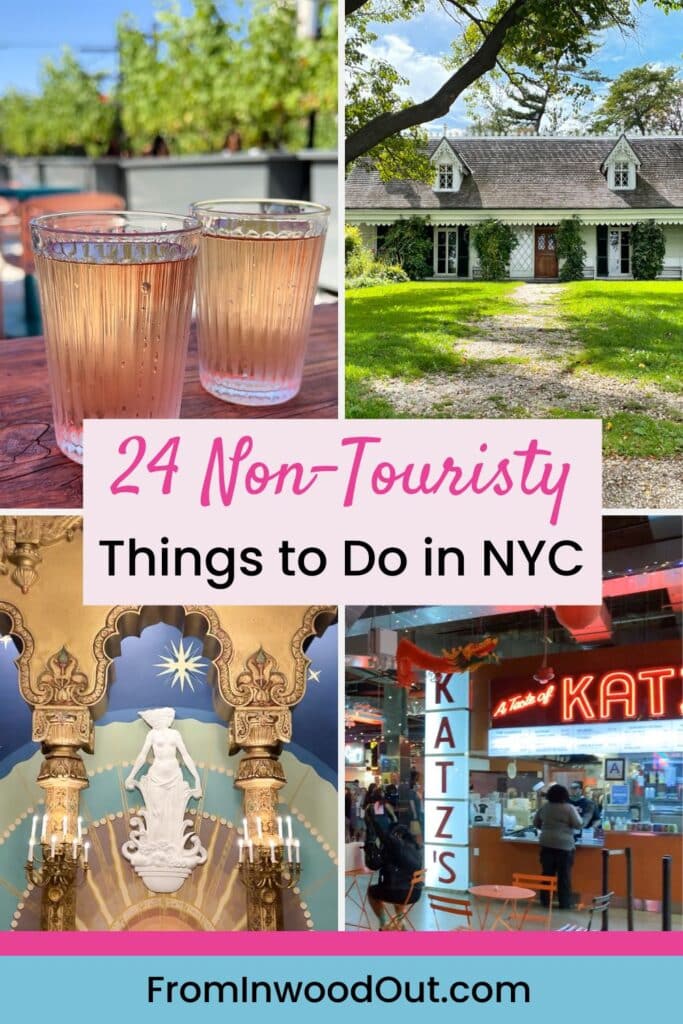
Whatever the case may be, please read on for 24 non-touristy things to do in New York City. You’ll find things to do in every borough.
Non-Touristy Things to do in Manhattan
1. View Rare Art and Manuscripts at The Morgan Library & Museum
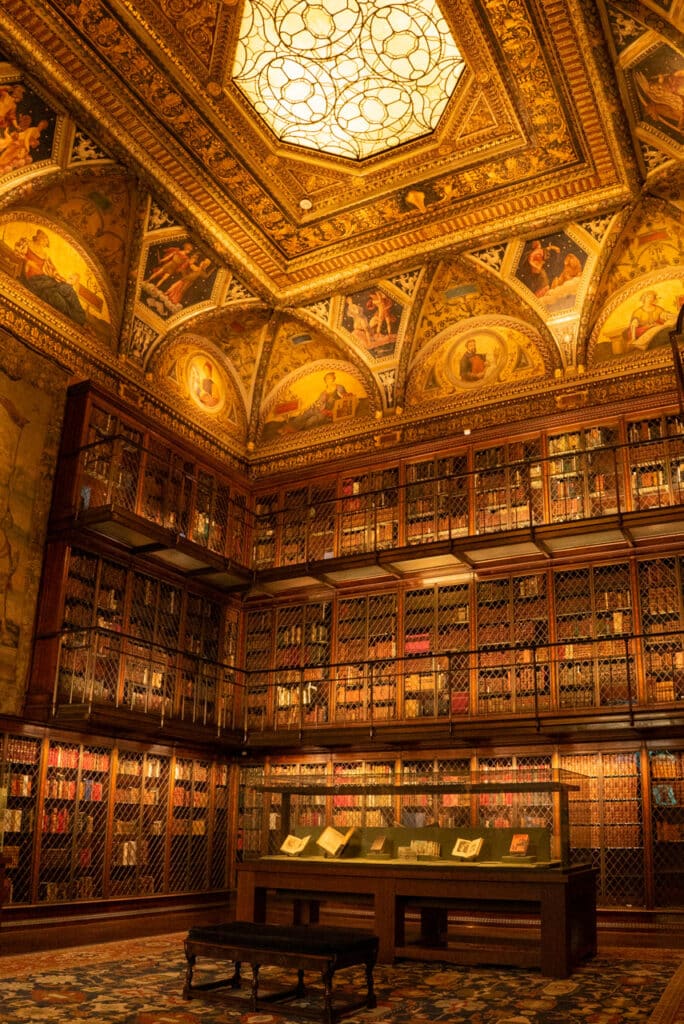
It’s hard to say what’s more impressive here: the opulent décor at every turn or the rare manuscripts towering from floor to ceiling.
Decide for yourself by checking out the galleries at the Morgan Library & Museum. The ornate East Room has glossy walnut bookshelves that reach an exquisitely painted ceiling. Among the rare books in this gallery is a Bible printed by Johannes Gutenberg in 1455.
Next, see handwritten manuscripts by Edgar Allan Poe and other literary masters of the 19th century in The Rotunda, decorated with intricate paintings, mosaics, and marble columns. And don’t miss Morgan’s personal study, accented in rich red silks and Renaissance paintings.
J. Pierpont Morgan was a New York financier and investment banker. He was also an avid collector of art and rare books, favoring Medieval illuminated manuscripts (hand-written books with illustrations painted in shimmery gold, silver, or other rich colors), early printed books, old master drawings, and manuscripts handwritten by writers and composers from the Renaissance period onward.
The Morgan Library & Museum started as Morgan’s personal library. The Italian Renaissance-style palazzo that is now the museum was built from 1902 to 1906 and was adjacent to his Madison Avenue townhouse. In 1924, Morgan’s son J.P. Morgan Jr. honored his father’s wishes of making the collection available for public viewing.
TIP: If you’re interested in the origins of the Morgan Library, I highly recommend The Personal Librarian, a novel about Belle da Costa Greene, the real-life librarian who played a large role in collecting and curating the rare materials on display at the museum today.
- Address: 225 Madison Ave., New York, NY
- See hours and admission
- Free Fridays: 5-7 p.m. Reservations required.
- Subway: 4, 5, 6, 7, or S trains to Grand Central Terminal
2. Relax Under the Gaze of Antique Statues at Elizabeth Street Garden
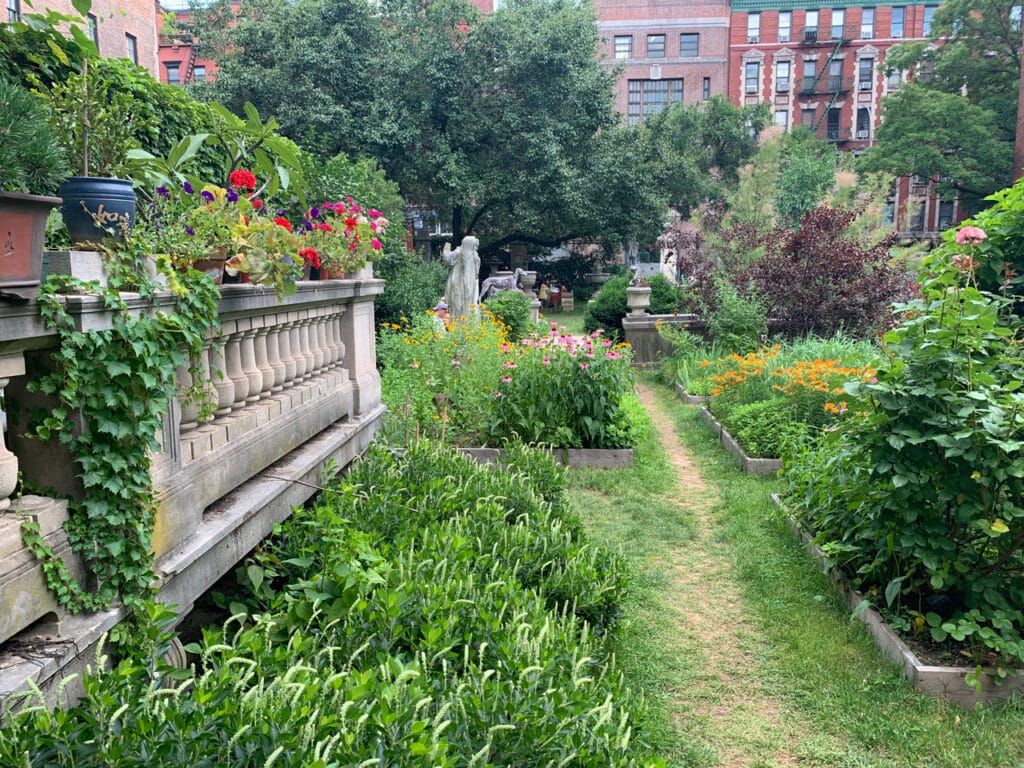
A lush garden decorated with antique statues and ornamental architecture takes up just one acre of space in Manhattan’s SoHo neighborhood. Once a vacant lot filled with trash, the garden became a public space when art collector and gallery owner Allan Reiver leased the land, cleaned it up, and decorated it with his own art.
Elizabeth Street Garden is a fraction of the size of Central Park and attracts only a fraction of visitors. Despite its small size, the garden offers an appealing post-shopping or post-brunch SoHo respite. Perfect for taking a leisurely afternoon stroll or spreading out a blanket for a couple hours of urban escape.
- Location: Elizabeth St. between Prince & Spring Streets in Manhattan
- Subway: R/W to Prince St. Station. B/D/F/M to Broadway-Lafayette St. 6 to Spring St.
3. Learn About History, Heritage, and Immigration at the Museum of Chinese in America
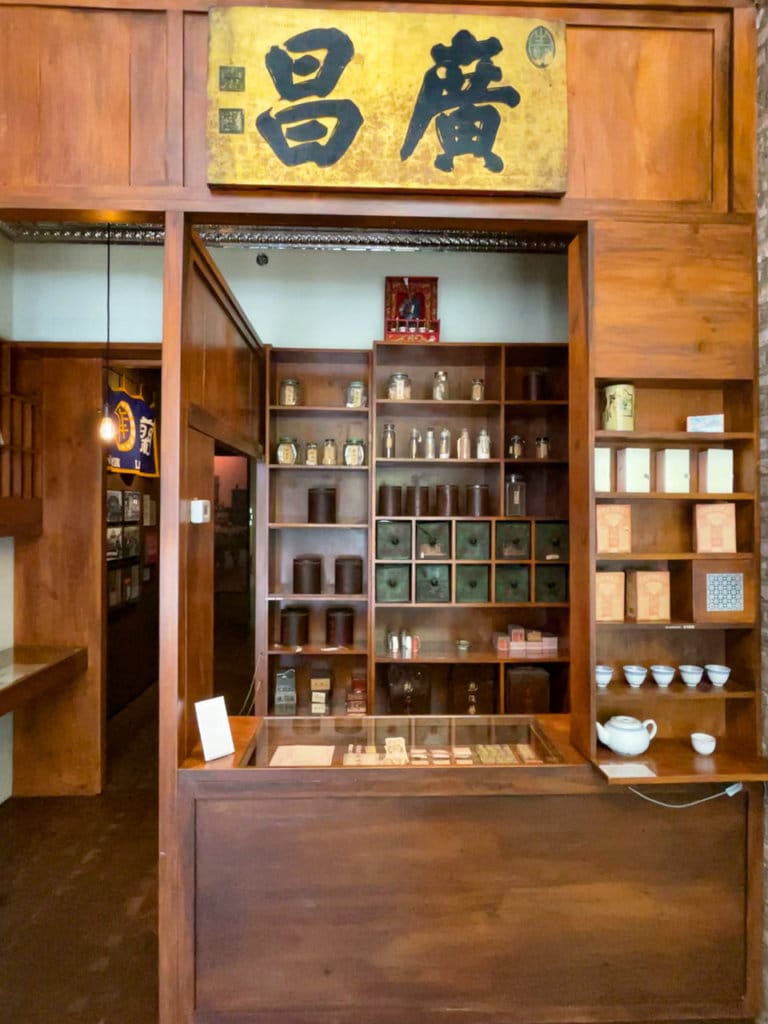
Sure, The Met has 35,000 pieces of Asian art and artifacts. The collection is breathtaking in scale and alone worth a trip to the largest museum in the U.S.
Lesser known but no less fascinating is the Museum of Chinese in America (MOCA), located in Lower Manhattan’s Chinatown neighborhood.
MOCA, like The Met, features art that showcases Chinese artistic traditions; however, this much smaller venue brings more into focus the lived experiences of Chinese people in America. The exhibits educate visitors on the long history of immigration from China to the United States, and describe the many contributions made by Chinese immigrants in the fields of film, science, aviation, agriculture and really, in the very foundation of this country’s infrastructure.
Also on display is evidence of the struggles and hardships that Chinese immigrants and the Chinese American community have undergone because of racism and racist policies.
MOCA’s tradition of bringing attention to injustice continues with their current exhibit, “Responses: Asian American Voices Resisting the Tides of Racism.” The exhibit responds to the most recent stream of violence occurring in America against people of Asian descent.
Visiting the Museum of Chinese in America is also a wonderful way to learn about New York’s immigration history.
- Address: 215 Centre Street, New York, NY
- See hours and admission
- Accessibility: The museum is wheelchair accessible.
- Subway: N/Q/R/W to Canal St. 6 to Canal St. A/C/E to Canal St. B/D to Grand St
4. Frolic in the Formal Conservatory Garden in Central Park
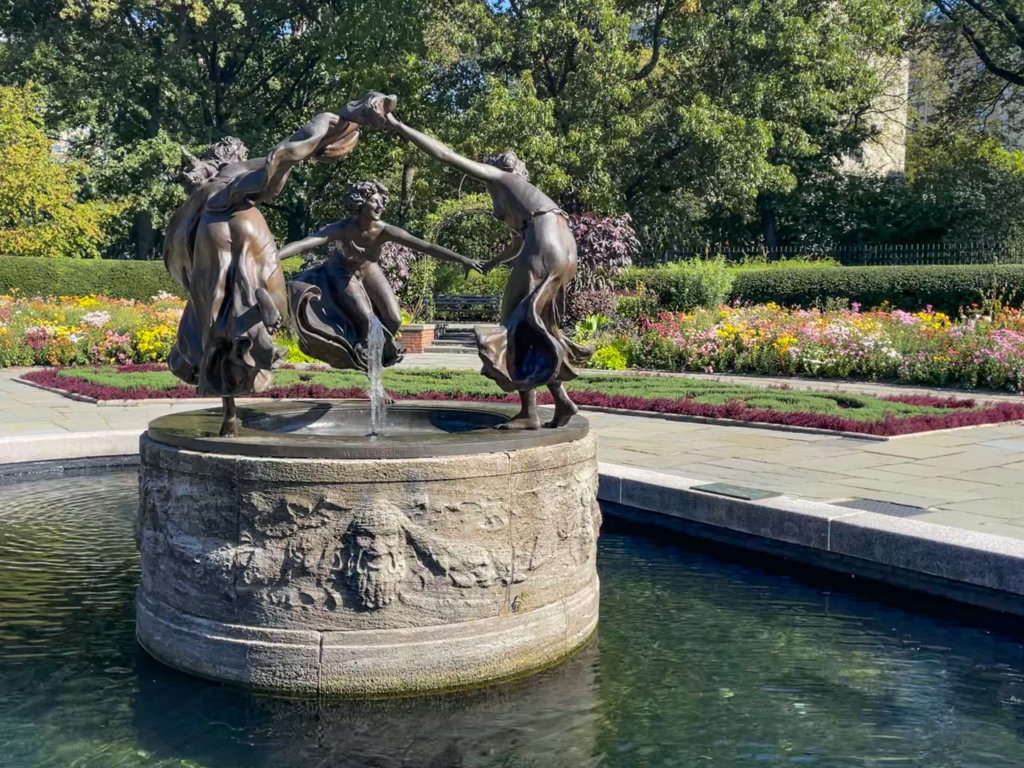
Whenever I visit the northern end of Central Park, I am both delighted at how different it looks from the rest of the park and surprised at the solitude and silence that can be found in a metropolis like New York.
The Conservatory Garden is the most formal garden in Central Park, a fact that becomes apparent once you pass through the 20-foot-tall ornate iron and brass entrance gate. The gate was made in the 1890s and served as the entrance to a Fifth Avenue mansion owned by Cornelius Vanderbilt II.
After entering Vanderbilt Gate, visitors will find three unique and immaculately landscaped gardens: the North Garden (French-style), the Center Garden (Italianate), and the South Garden (English-style). Decorating the landscape—depending on the time of year—are thousands of tulips and daffodils, a lovely wisteria pergola, whimsical fountains, and lilacs in white, pink, purple, and blue.
Once you’ve seen Central Park’s weekend crowds at Sheep Meadow, the runners at Onassis Reservoir, and a marriage proposal or two at Bow Bridge, head north to the solitude and elegance of the Conservatory Garden.
- Address: 1233 Fifth Avenue (between 104th and 106th Streets), New York, NY
- Subway: 6 train to 103rd St. 2/3 to Central Park North (110th St.).
5. Attend an Event at an Ornate 1930s Movie Palace
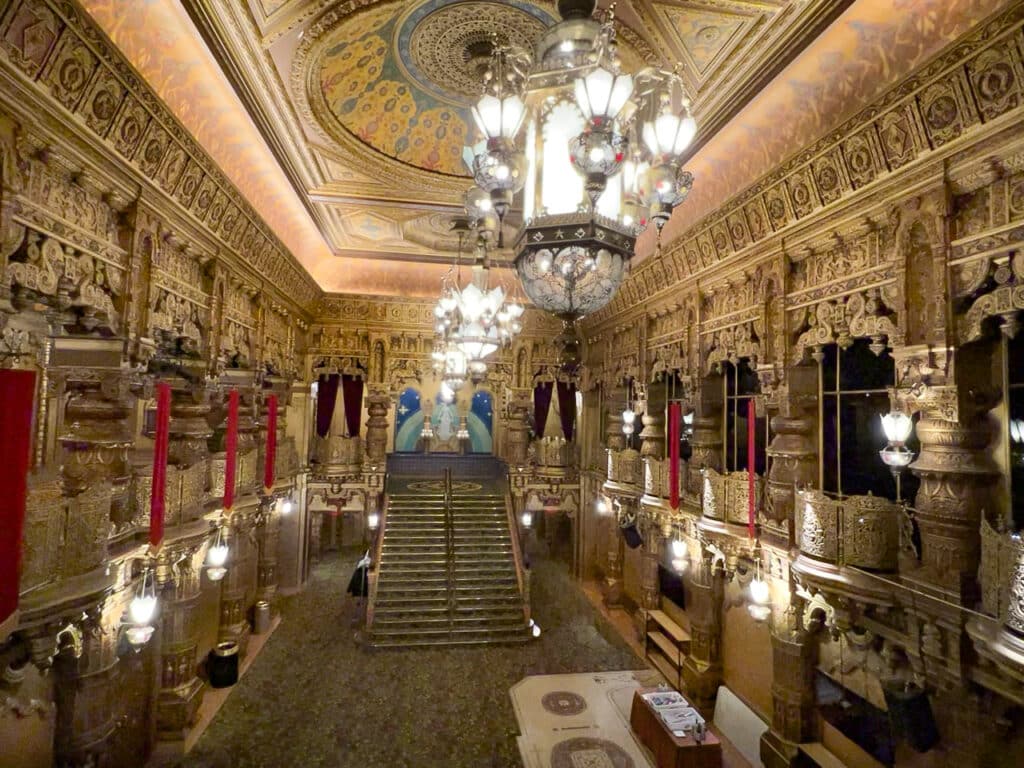
If you attend an event at the United Palace in Washington Heights, I recommend arriving early to give yourself time to gawk at all the incredible architectural wonders that this grand movie palace is made of.
The lush gold-toned lobby alone is stunning, with Moroccan chandeliers hanging from the arched painted ceiling, and elephants, sea creatures, and deities carved into the woodwork. Inside the theater, you’ll marvel at the soaring arched ceiling and at the sheer size of the theater, which seats more than 3,000 people.
United Palace was built in 1930 as one of Loew’s Wonder Theatres. It was a vaudeville house and movie theater and had seats for more than 3,000 people.
Now serves the community in the best way: by offering a regular program of movies, concerts, and events that are of interest to the local uptown community. The Movies at United Palace program is an annual series that features popular films followed by Lin-Manuel Miranda in conversation with film makers and actors.
These events are sponsored by the Miranda Family Fund (and New York-Presbyterian Hospital) and are FREE to the public. Note that advanced tickets are required, and they go very quickly!
If you’d like a more in-depth experience, I recommend a guided tour, offered monthly at United Palace. We took the Happy Hour Historical Tour, where guests are treated to a beer or glass of wine during the 90-minute tour. Keep an eye on all upcoming events.
As an exciting side note, for the first time ever, United Palace will host the 2023 Tony Awards on June 11!
- Address: 4140 Broadway (at 176th St.), New York, NY
- Subway: A train to 175th Street Station; 1 train to 181st Street Station
6. Satisfy Your Hunger at Northend Food Hall
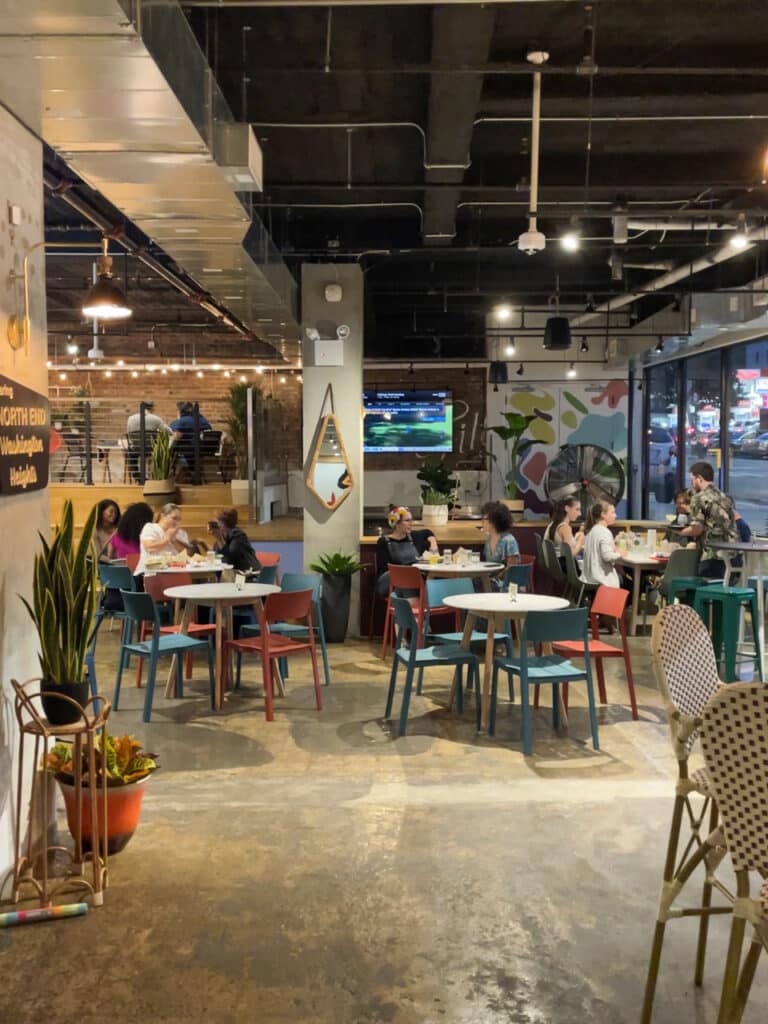
Not that you need food as a special reason to go to Upper Manhattan but just in case you do, here’s a good one!
Northend Food Hall is located in Washington Heights. Lots of seating is available inside the industrial-chic food hall, where patrons can order specialty cocktails, wine, and beer, and creative takes on pub comfort food from Harlem Public. In addition to Northend Bar, there are currently three food vendors at Northend Food Hall: Harlem Public, La Chula Taqueria, and Wahizza Pizza.
- Address: 4300 Broadway (between 183rd and 184th Streets), New York, NY
- Subway: A or 1 to 181 St.
7. Head to Uptown Night Market for a Taste of Local Food, Music, and Fun
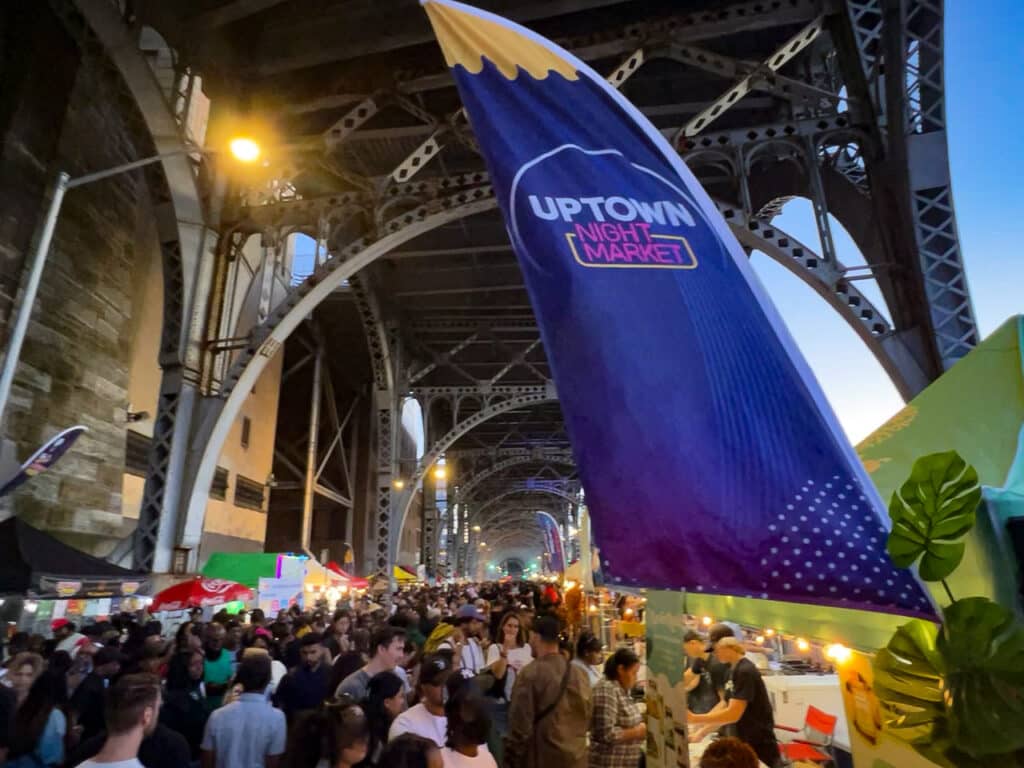
If you like your food markets outdoors and with live music, the seasonal Uptown Night Market in Harlem is a must. The market aims to celebrate community and culture and features food prepared by local Harlem restaurants and chefs. That means you get to try dishes from places like Fried Lasagna Mama, Butterfunk Biscuit Co., and Dre’s Water Ice and Ice Cream. And it all takes place under the Harlem Arches in beautiful West Harlem.
Uptown Night Market takes place every second Thursday from April to October, from 4-10 p.m.
- Location: Under the arches on 12th. Ave. and 135th St. in Harlem.
- Subway: 1 to 137th St.
8. Watch a Free Outdoor Movie in Inwood
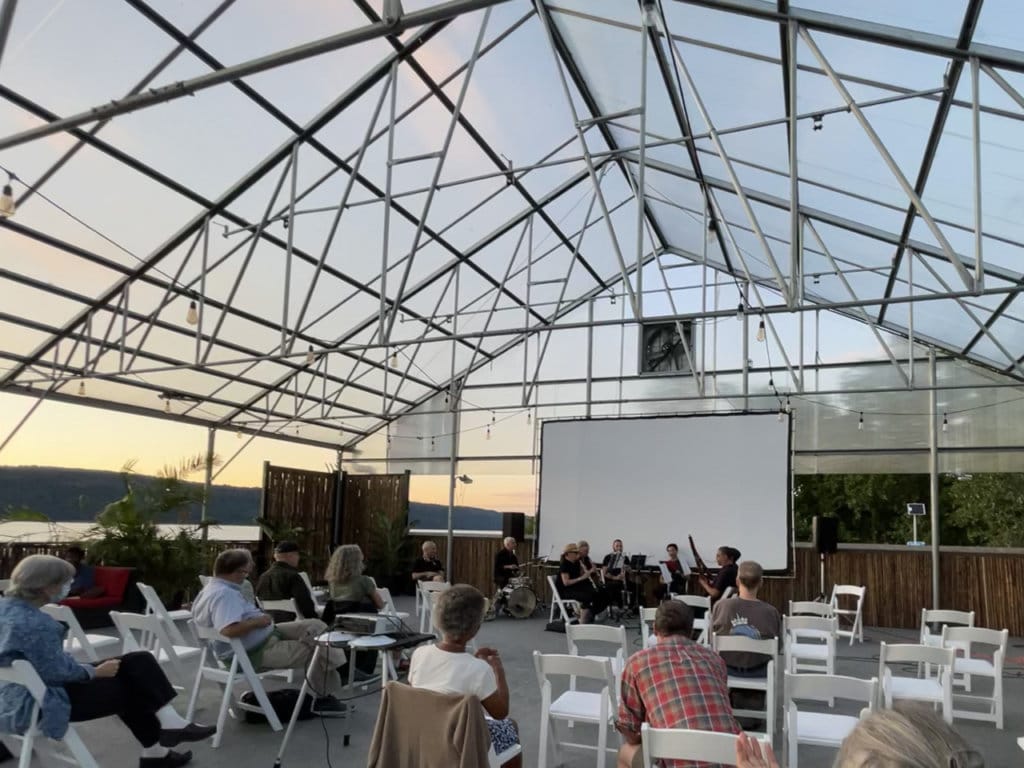
When the sun sets on a summer evening in New York City, there’s a good chance that somewhere, a movie screen flickers to life in the fading daylight, while an audience settles on their blankets or adjusts their chairs, ready to watch whatever free film is on the screen that week.
To escape the crowds that places like Bryant Park draw during their summer film series, consider heading to Inwood in Upper Manhattan. Not only will you take part in a very local New York experience, you’ll also attend the city’s only bilingual summer film series, known as Film Works Alfresco.
The event is made possible through Inwood Art Works, a local non-profit agency that strives to highlight the arts and artists of Upper Manhattan. (For more information, read my interview with the founder of Inwood Art Works).
This summer event is as local as it gets. Live music performed, by local musicians and on theme with the evening’s film, play a set or two before the sun goes down, and the movies, in a nod to Inwood’s Spanish-speaking community, alternate between Spanish one week and English the next, always with subtitles in the other language.
Movies will be shown under a covered space at The Hudson, a restaurant located on the Hudson River at Dyckman Marina.
- Address: The Hudson, 348 Dyckman Street, New York, NY
- Admission: FREE. Food and beverages are available for purchase at The Hudson.
- See the Summer Film Works Alfresco schedule.
Non-touristy Things to do in the Bronx
9. Tour the Bronx’s Oldest Home, the Van Cortlandt House Museum
In mild weather, Van Cortlandt Park appears always in motion. A huge plot of land at the northwest corner of the Bronx, the park is a destination for runners, hikers, and players of group sports like soccer and cricket.
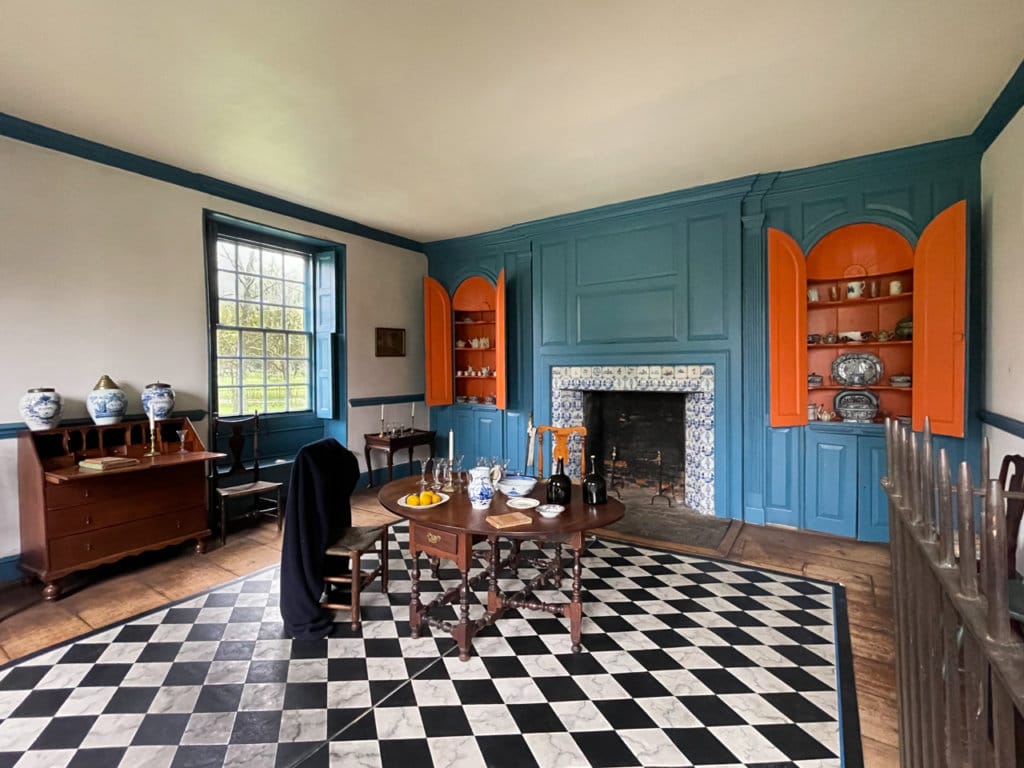
On the contrary, the giant stone house that sits on the edge of the park is quiet, with few people going in or out. Van Cortlandt House Museum, a Georgian-style home that was built in 1748, is the oldest building in the Bronx and was also the very first house museum in New York City.
It was lived in continuously by members of the Van Cortlandt family for 140 years and visitors can tour the home to see how wealthy plantation owners lived throughout the 18th and 19th centuries.
More significantly, the museum continues to research and bring to light the lived experiences of individuals who were enslaved by the Van Cortlandt family, the same individuals who built the house and made their wheat plantation—located where the park is now—operate successfully.
Census records show that the family owned slaves for close to 120 years and now, thanks to the museum’s ongoing research, the lives of enslaved individuals are now part of the narrative history of the home.
Much like the Dyckman Farmhouse Museum in Inwood, these old homesteads are record-keepers of the history and development of New York, but now it’s becoming more possible to tell the stories of the enslaved individuals who made this growth possible.
- Address: 6036 Broadway, Van Cortlandt Park, Bronx
- See hours and admission
- Subway: 1 to 242nd St.
10. Find Peace Among the Plants at Wave Hill Public Garden
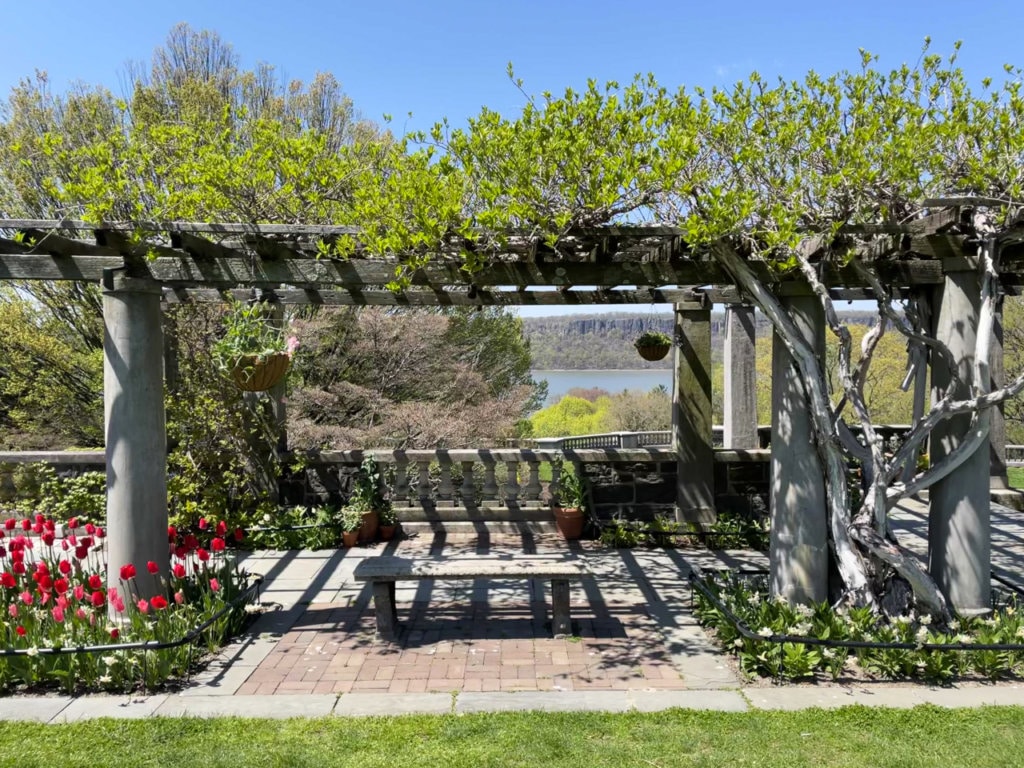
This relatively small public garden is located in a quiet corner of the Bronx; therefore, it’s less touristy than its splashy big sister, the New York Botanical Garden, also located in the Bronx.
Wave Hill calls itself an urban oasis, a description that is obviously accurate immediately upon entering the gates, where woodland paths, stately old trees, and grand buildings greet visitors. Perched high above the Hudson River with the edges of the property sloping downward, the garden offers picturesque views with nearly every step.
The most scenic viewing point is at the Pergola, which acts as a picture frame from which to view the Palisades across the river. The rest of the garden is visually lovely, too, and manageable to see in one afternoon.
It’s satisfying to simply wander on the woodland trails or in the gardens, popping in and out of greenhouses that grow plants from varying climates such as alpine, desert, and tropical. To dig a little deeper, visitors can take a guided Garden Highlights Walk, occurring every Sunday at 2:00 p.m. Wave Hill also features special events with art exhibits, performances, and concerts.
The Café at Wave Hill serves sandwiches, salads, snacks, and beverages.
- Address: 4900 Independence Ave., Bronx, NY
- See hours and admission
- Accessibility: Indoor spaces are accessible to all visitors. Areas of the garden that are less accessible are indicated on the Wave Hill map.
- See options for traveling to Wave Hill.
11. Spend a Day in the Sun at Orchard Beach
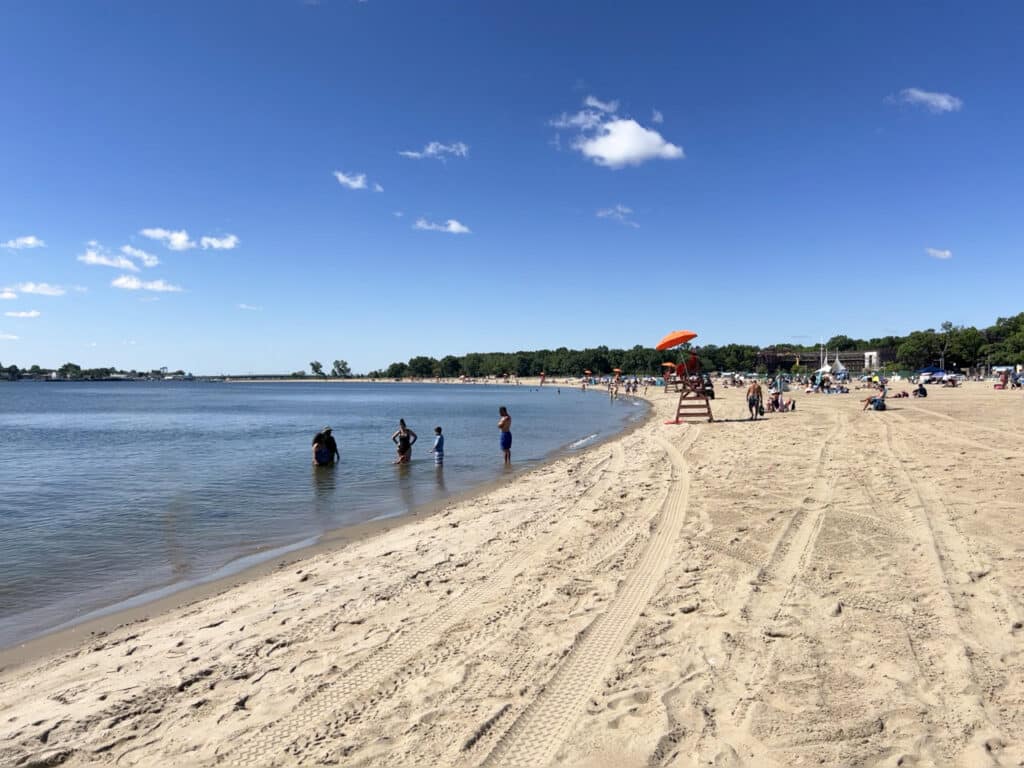
It took Matt and I the pandemic summer of 2020 to think outside the box and head to a beach other than Coney Island or Rockaway Beach. We found that it was not only closer to where we live, but a destination where we could spend a day swimming and walking on nature trails and then around sundown, head to nearby City Island for a fresh seafood meal.
Orchard Beach is 1.1 miles long and sits on the Long Island Sound. It’s the Bronx’s only public beach and when it was created in the 1930’s, it was called “The Riviera of New York.” There’s a pleasant promenade with public restrooms and snack bars, and lifeguards are on duty during the summer months.
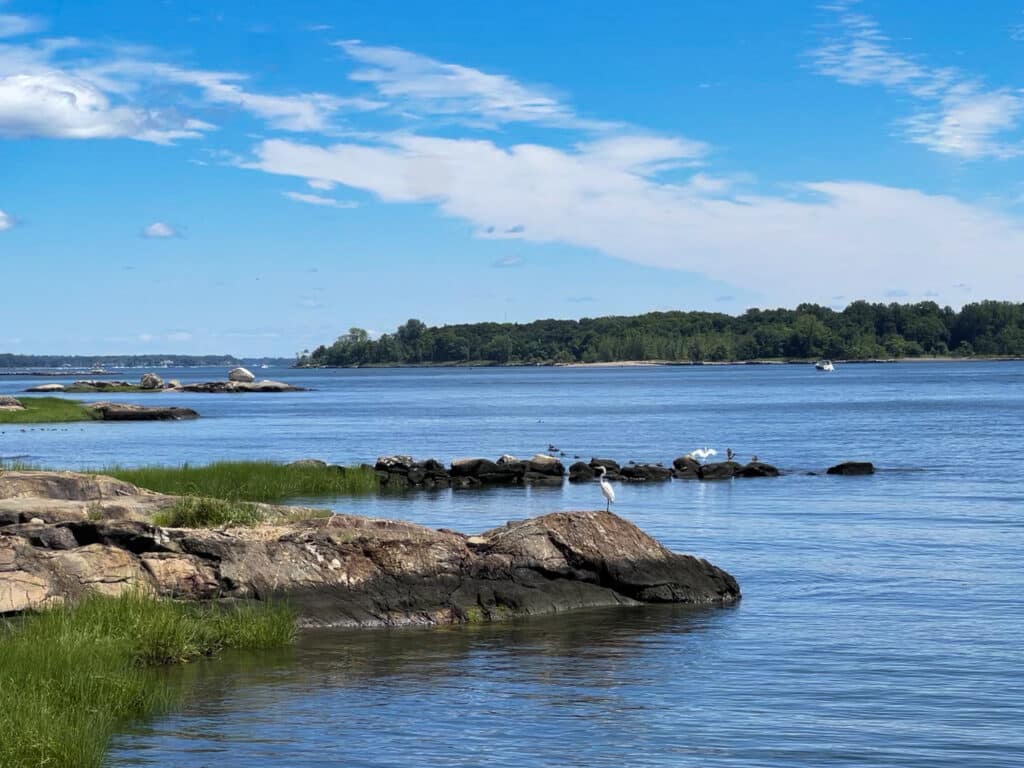
Barbecue facilities are also available in specified areas.
Orchard Beach draws large crowds on nice summer days but there’s usually plenty of room for everyone to spread out. If you need a break from the beach, lace up your sneakers and take a nature walk on the Kazimiroff Nature Trail, which meanders through the forest, out onto the rocky shore, and into the wetlands. NOTE: Bring insect repellent!
A huge parking lot is on site. The Bx29 bus also stops at Orchard Beach.
- Location: On Long Island Sound in Pelham Bay Park, Bronx
- Season: Orchard Beach is open from Memorial Day-mid-September.
- Parking: $9.00 Monday-Friday. $11.00 on weekends and holidays.
12. Get Your Fill of Local Cuisine at the Bronx Night Market
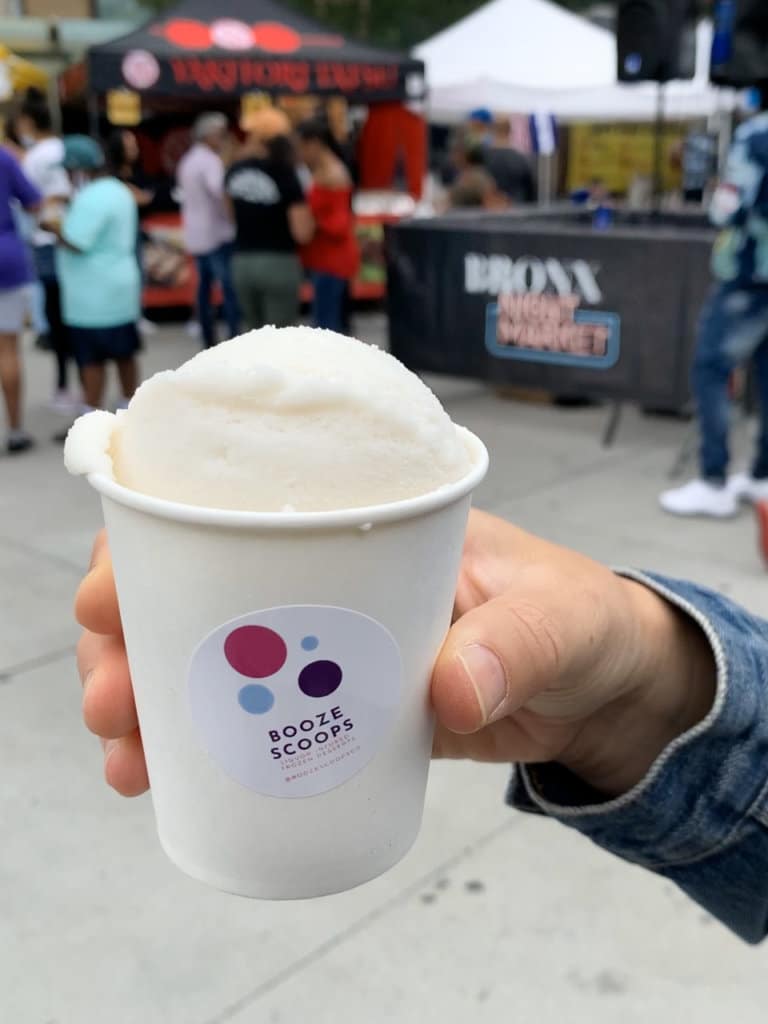
Arthur Avenue, the Bronx’s Little Italy, is indisputably a popular food destination but to try an alternative food adventure in the Bronx, I recommend checking out the variety of vendors at the seasonal Bronx Night Market.
A wide range of cuisines are available in a relatively small space, making it the perfect opportunity to sample lots of food from the dozens of vendors. Try a plate of fried lasagna, Caribbean inspired tacos, Dominican barbecue, and so much more.
They also host occasional events with live music. The Bronx Night Market is also a great excuse to check out the lively neighborhood around Fordham Plaza.
- Address: 1 Fordham Plaza, Bronx, NY
- Season: Last Saturday of every month, from April-October. 1-7 p.m.
- Subway: D train or 4 train to Fordham Road.
Non-touristy Things to do in Brooklyn
13. Come Face to Face with Creatures at the New York Aquarium
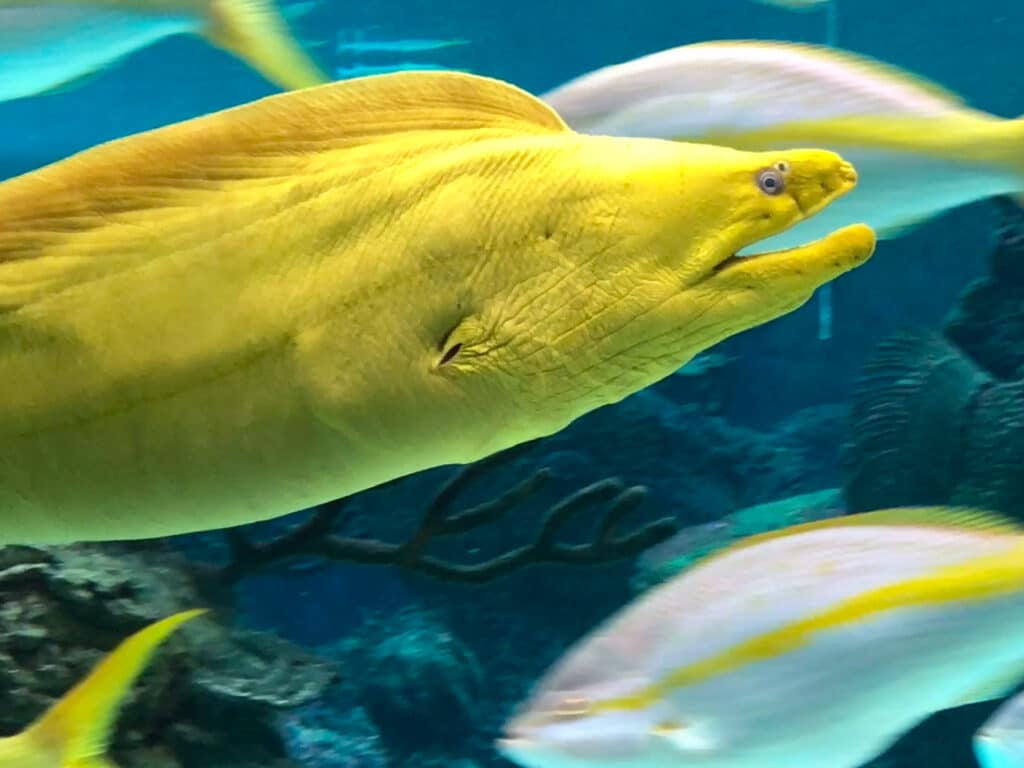
A 2018 news article announcing the exhibit called Ocean Wonder: Sharks stated that four out of five Aquarium visitors come from within only a ten-mile radius, confirming that most of the tourists are local visitors.
And for good reason.
The Aquarium is a neighborhood gem, especially since the completion of the 40-foot overhead tunnel loaded with sharks, fish, rays, and other marine animals straight from the Great Barrier Reef and Fiji.
If you visit the New York Aquarium during the summer, you’ll be able to take advantage of the boardwalk, beach, and amusement rides of Coney Island. However, the Aquarium, which was originally founded at Castle Garden in Battery Park in 1896, is worth the subway ride any time of year.
After strolling under the aquarium tunnel and communing with the sharks, tropical fish, and neon-colored eels, visit the penguins or check out a feeding of the sea lions in the Aquatheater.
As you may be able to tell from our video, Coney Island is one of our favorite destinations in New York City!
- Address: 602 Surf Ave., Brooklyn, NY
- See hours and admission
- Accessibility: All aquarium buildings and exhibits are wheelchair accessible.
- Subway: Take the F or Q to West 8th St. Take the N or D to to Coney Island-Stillwell Ave.
14. Examine Cultural Relics at the City Reliquary
Plenty of popular New York City museums will take you on a deep dive of the city’s history but for the most unusual take, check out the City Reliquary in the Williamsburg neighborhood of Brooklyn.
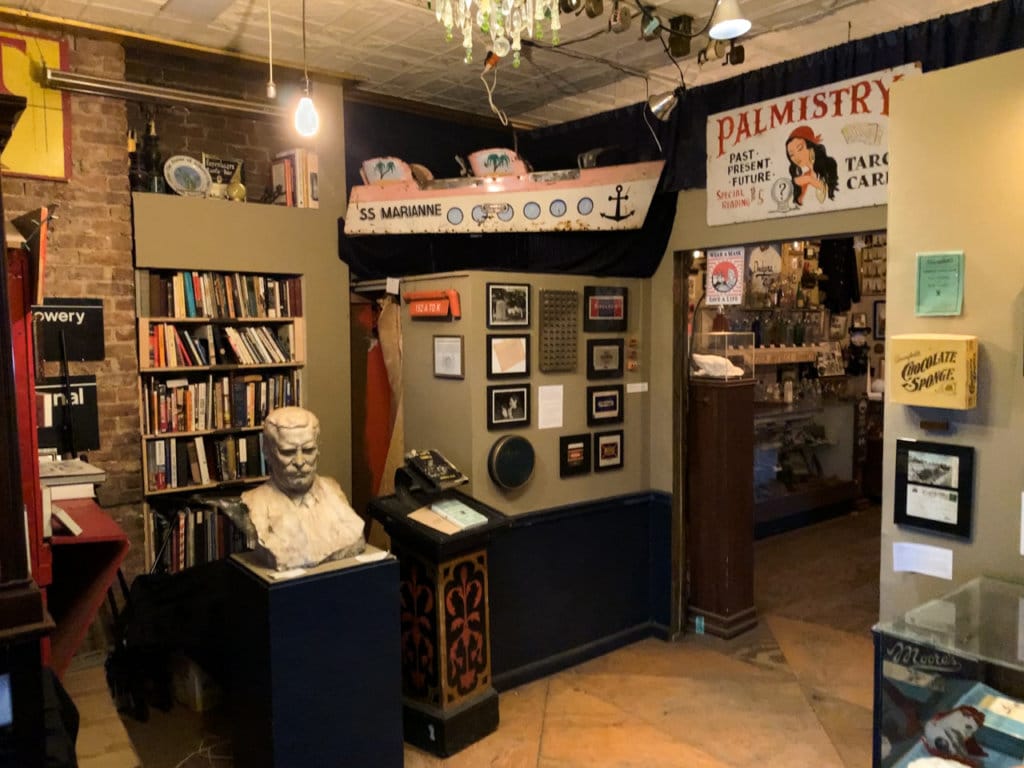
The venue is somehow both out in plain view but also inconspicuous enough that people passing by may not even be aware of what’s behind the closed doors.
What is behind those doors is hard to explain: A large center room holds most of the museum’s permanent collection and it’s packed to the rafters with various artifacts that represent New York at different times and places in history.
Old subway signs line the walls next to the antique straps that subway riders once held onto. Souvenirs from the 1939 World’s Fair, including a ticket, a postcard, and a keychain are framed under glass. There’s an endless number of Statue of Liberty statues in miniature. There’s a row of old-fashioned seltzer bottles lining a shelf beneath what appears to be a shrine to baseball legend Jackie Robinson.
If you have a curiosity for collectibles or quirky New York City memorabilia, or want a unique place to spend an hour in Brooklyn, be sure to visit this unusual venue. The City Reliquary also displays collections from the local community and hold events in their garden.
- Address: 370 Metropolitan Ave., Brooklyn, NY
- Hours: Saturday and Sunday noon-6 p.m.
- See admission
- Subway: G to Metropolitan Ave. L to Lorimer St. J/M/Z to Marcy Ave.
15. Get a Taste of Brooklyn at Dekalb Market Hall
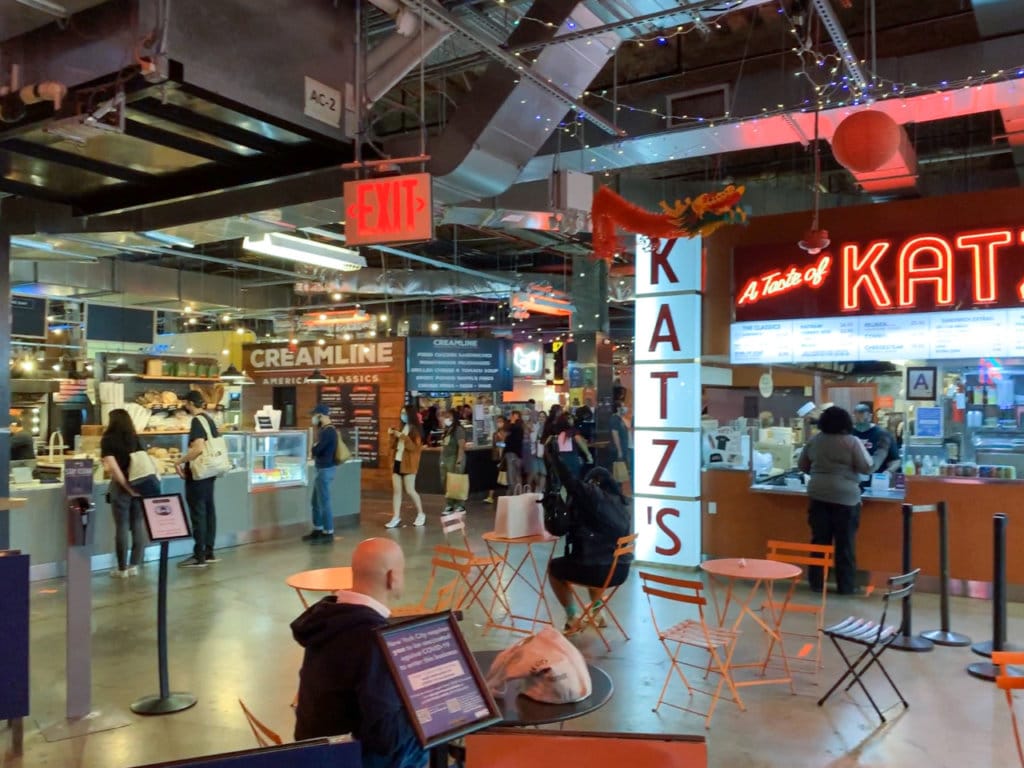
Brooklyn loves food markets, from the open-air Smorgasbord to the enclosed Time Out Market, both of which are popular venues with dozens of vendors selling a diverse variety of cuisines.
Both of the above markets are lucky to have waterfront locations. That is to say, they tend to, with good reason, get very crowded. If you want to escape the crowds, try Dekalb Market Hall as an alternative, an indoor food market located on the bottom floor of City Point, a residential and commercial building in downtown Brooklyn.
There are more than 40 vendors to choose from, all of which are meant to represent the diversity of Brooklyn and New York City.
I had a deeply satisfying meal of jerk chicken from Likkle More Jerk—it honestly tasted homemade-fresh—while Matt had fantastic bulgogi Poke Bowl from Wiki Wiki. Both of us felt we’d eaten the best meals we’d had in a long time.
Seating is available throughout Dekalb Market Hall. Lots of wine, beer, and dessert vendors are also on location to round out your meal. See full list of vendors.
- Address: 445 Albee Square W, Brooklyn, NY (downstairs at City Point)
- Hours: Open Monday-Sunday 11 a.m.-9 p.m. Breakfast vendors: 8 a.m.-4 p.m.
- Accessibility: It’s possible to take an elevator to the bottom floor at City Point, where Dekalb Market Hall is located.
- Subway: 2/3 to Hoyt St. B to Dekalb Ave. Q to Dekalb Ave. A/C to Jay St.-MetroTech.
16. Appreciate Artistic Talent at Bushwick Collective Street Art Gallery
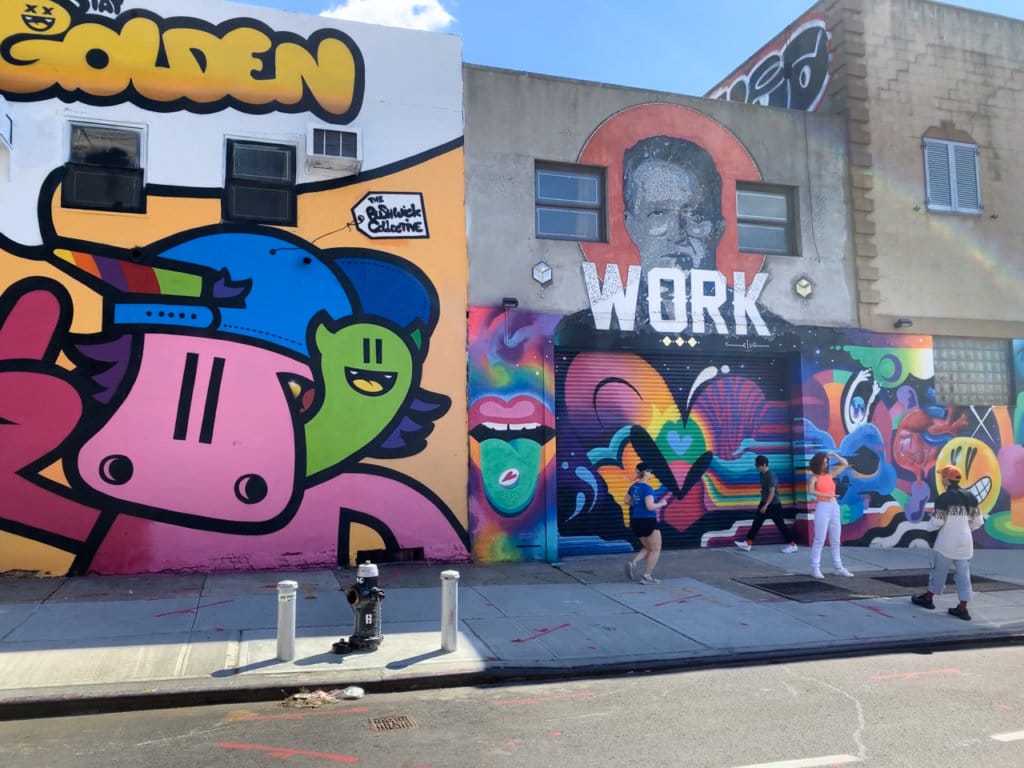
There is no shortage of street art across the boroughs of New York but there’s no place like Bushwick, where colorful murals adorn the walls of dozens of neighborhood buildings. The open-air gallery known as the Bushwick Collective has been displaying street art for a decade now, and artists come from around the world to show off their talent and skill.
This is a popular attraction that does tend to draw a lot of people, especially every summer during the annual Bushwick Collective Block Party. Fortunately, though, the murals are spread across nearly 100 blocks, making plenty of space for everyone.
For more information, read this guide on everything you need to know about visiting.
- Where to view street art: Take the L train to Jefferson Street Station. Many of the murals can be seen on Troutman Ave. between Cypress Ave. and Irving Ave.
17. See Avant-garde Performances at Hip Brooklyn Venues
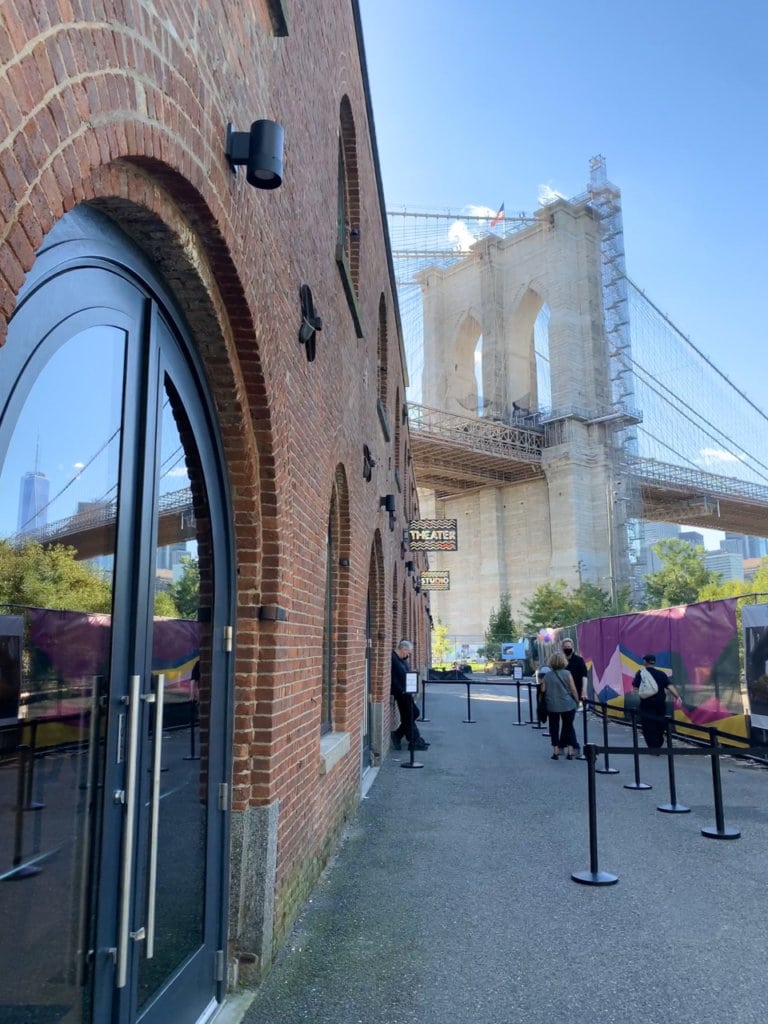
Some of my favorite early memories of living in New York are watching obscure theater performances that took place in dark basements in out-the-way locations around the city.
At the end of many of these shows, Matt and I often left unsure if we understood the plot, or the ending, or the message. But I was hooked. I felt like I’d stumbled onto an underground culture I’d never known about, one that made me understand that New York is place where people are buzzing with talent and where they’ll take action to bring that talent to light, even if the light is in a dark basement somewhere in the East Village.
So, yes, you must experience the razzle-dazzle of Broadway plays but after you do, consider getting off the beaten path for some really interesting live theater.
Brooklyn happens to have a selection of venues that focus on inclusive, avant-garde performances by both emerging and established talent. Three of these venues are Bushwick Starr, the Brooklyn Academy of Music (BAM), and St. Ann’s Warehouse.
These are not dank performance spaces of my early years in the city, but the energy of creativity is similar. Also the lighting is better and the seats are more comfortable!
I hope you are as pleasantly surprised as I was at how far and wide talent spreads throughout this city.
- Bushwick Starr: 419 Eldert St., Brooklyn, NY (currently in process of moving from this address)
- Brooklyn Academy of Music: 30 Lafayette Ave., Brooklyn, NY
- St. Ann’s Warehouse: 45 Water St., Brooklyn, NY
18. Sip Wine With a View at Rooftop Reds
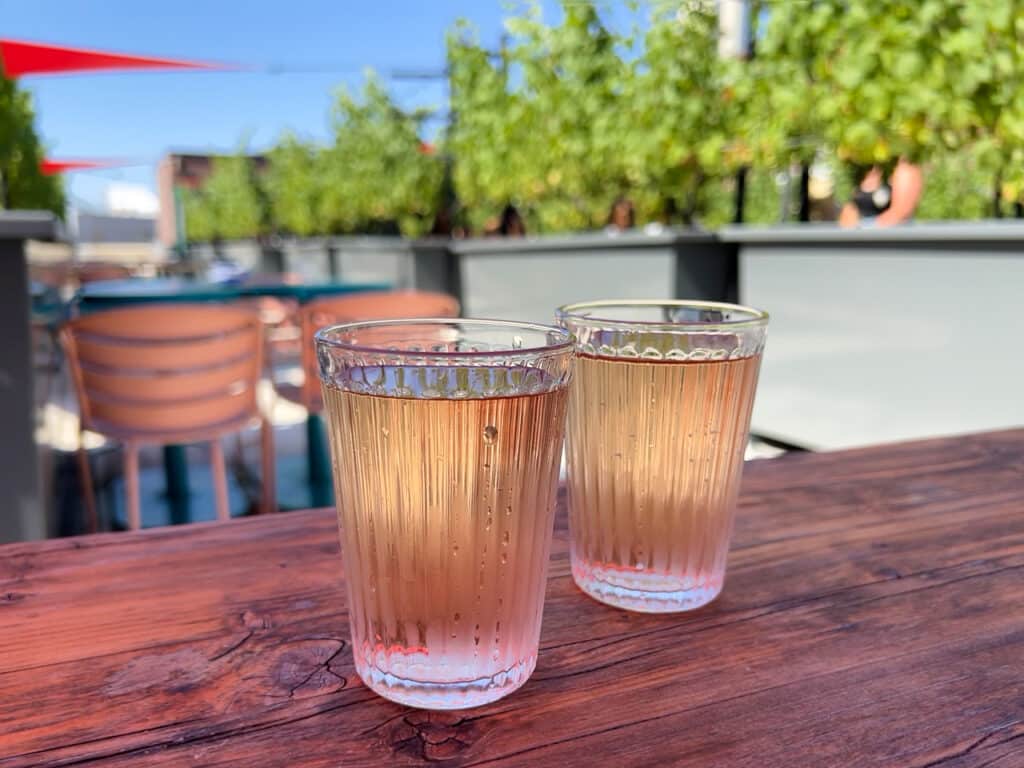
Sipping wine on a vineyard-covered rooftop in Brooklyn is an experience you likely won’t share with a lot of other tourists! Located at the Brooklyn Navy Yard, Rooftop Reds is certainly off the beaten path but worth the effort to get here for wine lovers and anyone looking for a unique outing.
The urban rooftop vineyard was founded in 2016. On the rooftop are 42 planters that grow the grapes they harvest and then, in collaboration Point of the Bluff Vineyards, a winery on Keuka Lake in the Finger Lakes, produce their signature wine. The rooftop vineyard produces enough grapes for 20-25 cases of wine. The rest are sourced from the Finger Lakes.
Rooftop Reds is open seasonally. Reservations are required and come with a fee of $10 and a specific time frame that must be adhered to. A light fare menu is available.
Be sure to check the calendar for lots of special Rooftop Reds events.
- Address: Brooklyn Navy Yard, 299 Sands St. Building 275, Brooklyn, NY. See more details on getting to Rooftop Reds
- Subway: F to York Street (then B67 Bus to Market St./9th Ave.). A/C to Jay St.-MetroTech (then B67 Bus to Market St./9th Ave.)
Non-Touristy Things to do in Queens
19. Enjoy a Mix of Nature, History, and Culture at Flushing Meadows Corona Park
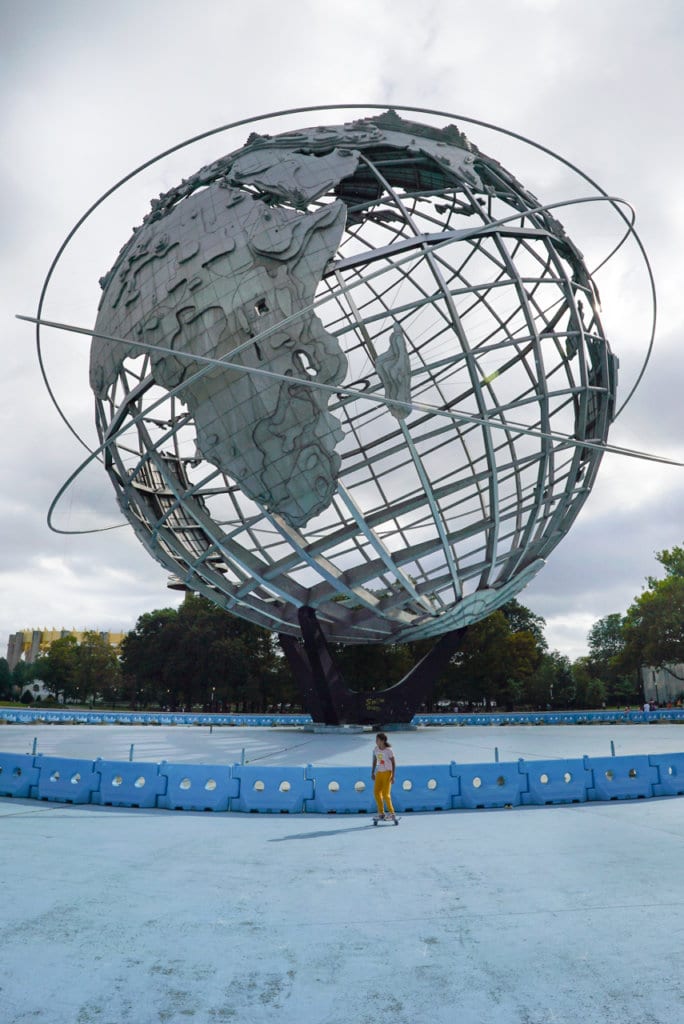
Make no mistake—this is a busy, thriving park that’s popular with people who come to play soccer, and cricket, relax by the lake with a picnic, or get some exercise on one of the park’s scenic hiking trails.
History buffs are also drawn here by the iconic Unisphere and other relics left over from the two World’s Fairs that were held here—first in 1939 and again in 1964.
Flushing Meadows Corona Park is the largest park in Queens and while it’s an incredibly popular destination for local residents, it’s not particularly a tourist magnet (with the exception of special events like the U.S. Open).
One takeaway I’ve always gotten after visiting is that it’s an ideal glimpse into how much New Yorkers love and make constant use of the incomparable public parks we are blessed with throughout the city.
If you time your visit right, it might coincide with the seasonal Queens International Night Market, a large foodie event that showcases through cuisine and performing arts the incredible diversity that makes Queens the unique borough that it is.
- Location: Between Grand Central Pkwy and Van Wyck Expy, Flushing, Queens
- Subway: 7 train to Mets-Willet Point or 111 Street Station
20. Get a Birds-eye View of New York at the Queens Museum
Also located in Flushing Meadows Corona Park, the Queens Museum is a significant historical landmark. The building that now houses the museum was used as an official pavilion for both the 1939 and 1964 World’s Fairs, and now visitors can peruse more than 10,000 objects that commemorate those events.
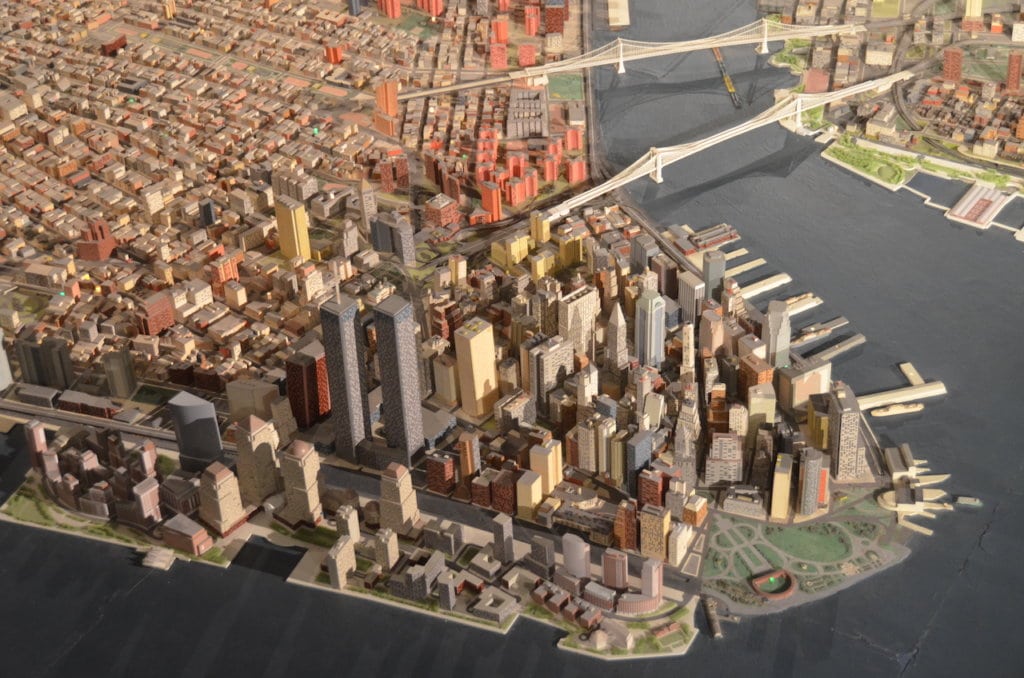
The museum’s main attraction, which was built for the 1964 World’s Fair, is the Panorama of the City of New York, a rendering of New York City in miniature that turned out to be the most popular attraction at the fair.
The 9,335 square-foot three-dimensional diorama is so life-like that visitors can spend hours spotting the city’s major bridges, skyscrapers, and landmarks, and waiting for the lighting to cycle from dawn to dusk to night, causing the miniature city to twinkle like it does in real life.
You can even watch miniature planes landing at LaGuardia Airport, though don’t expect it to be the newly renovated LaGuardia–the panorama hasn’t been updated since 1992.
And beware: while this is the diorama that Fran Lebowitz tiptoed her way through in “Pretend It’s a City,” visitors must stand on an elevated ramp and view the mini-Big Apple from above.
- Address: New York City Building, Flushing Meadows Corona Park, Queens, NY
- See hours and admission
- Accessibility: Queens Museum is accessible to all visitors.
- Subway: 7 train to Mets-Willet Point
21. Visit a Jazz Legend at Louis Armstrong House Museum
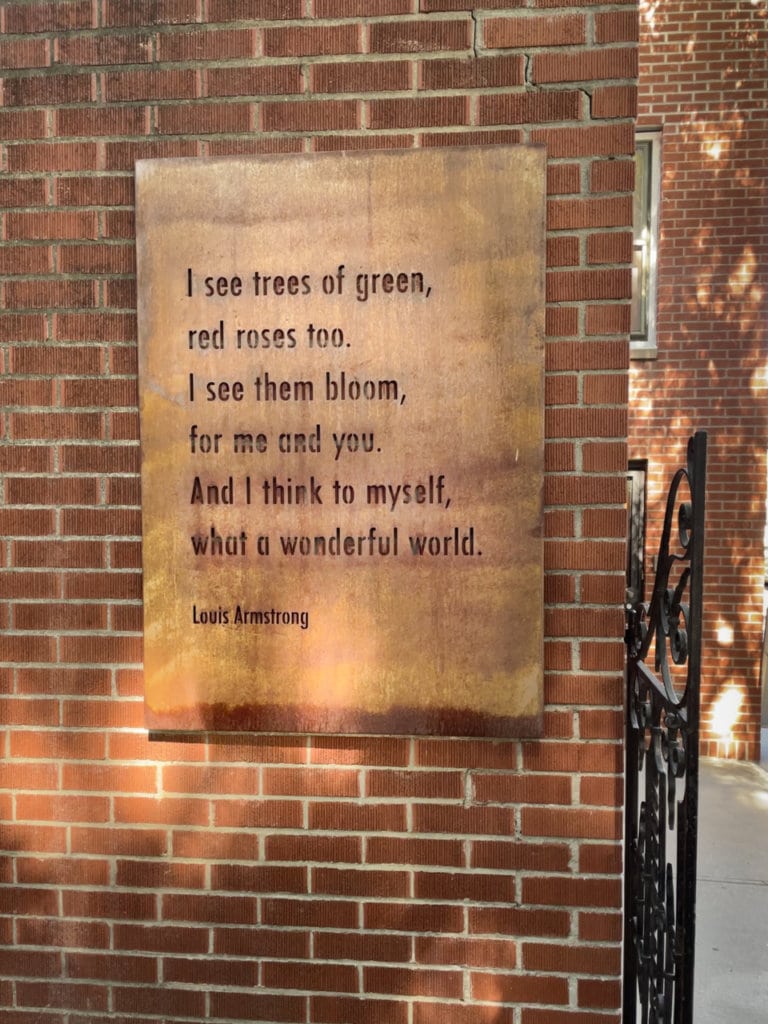
Historic house museums are scattered throughout New York City and in my experience, they don’t usually attract huge crowds (except maybe Alexander Hamilton’s home around 2015, when the big Broadway musical debuted).
Usually they tend to be such gently visited places that I’ve often been the only tourist present. That was true for the home in Corona, Queens where Louis Armstrong and his wife Lucille Wilson lived together for 28 years, until Armstrong’s death in 1971.
The Louis Armstrong House Museum is now a National Historic Landmark and museum, allowing visitors to see the home and neighborhood that the couple loved so much.
The only way to tour the home is with a guide, who will tell stories of the couple’s life, talk about Armstrong’s adoration of the neighborhood kids, and play recordings of Armstrong talking, sometimes with Lucille, and sometimes musing about his music and his life.
Visitors will also get to see how meticulous and stylish Lucille’s taste in décor was—the custom-made aquamarine kitchen is to die for. Also on display are photographs, souvenirs from the couple’s travels, and a painting of Armstrong done by a young and talented friend named Tony Bennet, who was a talented artist before he–like Armstrong–also became a household name for his music.
Photographs inside the Louis Armstrong House Museum are not allowed.
- Address: 34-56 107th Street, Queens, NY
- See hours and admission
- Accessibility: Welcome Center and garden are wheelchair accessible. The historic house is not.
- Subway: 7 train to 103 St.-Corona Plaza
Non-Touristy Things to do in Staten Island
22. Visit a Site of Historical LGBTQ Significance at the Alice Austen House Museum
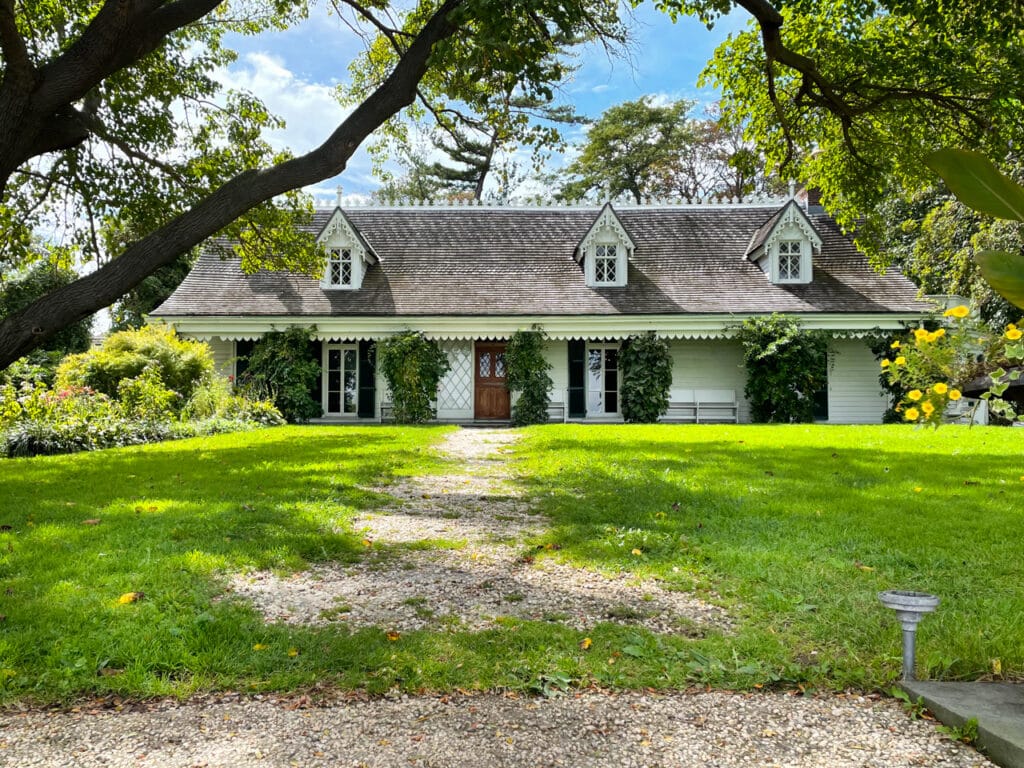
This is a house museum that should be bursting at the seams with tourists but somehow isn’t.
At least not yet.
The Alice Austen House Museum tells the story of an independent woman who was born into a wealthy family in the Victorian era in New York City. Austen grew up on an estate in Staten Island that the family named Clear Comfort and when she was ten years old, her uncle gave her a camera he’d brought from Germany.
Austen taught herself how to use the camera and develop the photos and in her adult life she became one of the first female photographers in the country.
But that’s only part of her story as a trailblazer. Austen took endless photos of her friends, many of which feature women wearing men’s clothes and vice versa, something that was unheard of in her conservative Gilded Age society.
Austen was also in a lifelong relationship with Gertrude Tate and the couple lived in the house together for 30 years. They were eventually evicted after Austen lost her wealth in the stock market crash of 1929, but they remained committed to each other until Austen died in 1952.
One of the goals of the Alice Austen House is to bring Austen’s 53-year relationship with Tate to the forefront of her life, rather than in the background where it hovered for many years after their deaths. In the past, Tate was often referred to as Austen’s “friend” whereas she was, essentially, her wife for more than half a century.
The property where the home now sits is a nationally designated site of LGBTQ history.
Visitors can tour the home and see much of the original furnishings and fixtures, as well as souvenirs that Austen and Tate picked up on their world travels.
Also on view are many of Austen’s photographs. She was known for her work in capturing images of New York’s immigrant population. She also took photos of the city’s immigrant quarantine stations in the 1890s. Alice Austen House is only offering pre-booked ticketed tours via their online scheduling platform.
- Address: 2 Hyland Blvd., Staten Island, NY
- See hours and admission
- Accessibility: The public areas of the museum are largely wheelchair accessible.
- How to get there: Staten Island Ferry to St. George Ferry Terminal. S51 bus to Bay St./Hylan Blvd. or S78 to Hylan Blvd./Vaughn St.
23. Contemplate Nature at the New York Chinese Scholar’s Garden
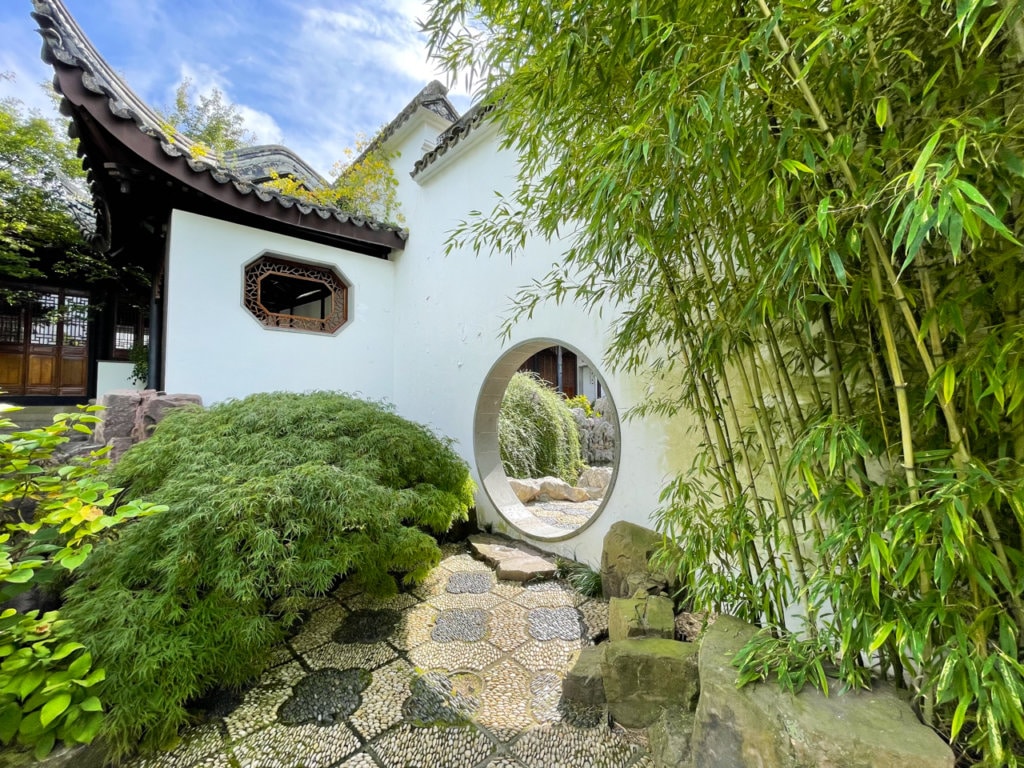
Of all the non-touristy things to do in New York, this classical Chinese garden in Staten Island prompted my biggest “wow” moment. It is the most beautiful and the most serene garden I’ve seen in New York City. Where else in NYC can visitors sit and simply appreciate a setting made up of quiet streams of Koi fish, flowering plum trees, and intricate Chinese architecture? This garden is like nothing else I can think of anywhere nearby.
The New York Chinese Scholar’s Garden is modeled after gardens of the Ming Dynasty era. The space consists of several pavilions, bamboo pathways, stone bridges, and small cascading waterfalls.
At the entrance to the pavilion, visitors can take one of several informational cards on hand to help them identify things they’ll encounter, such as the meanings of the plants in the garden, translation of the calligraphy, and the architectural elements.
It was from these cards that I learned that a Moon Gate is a symbol of the completeness of the universe. It also provides a changing view of the garden; the view changes depending on where you view the Moon Gate from. (See Moon Gate in above photo).
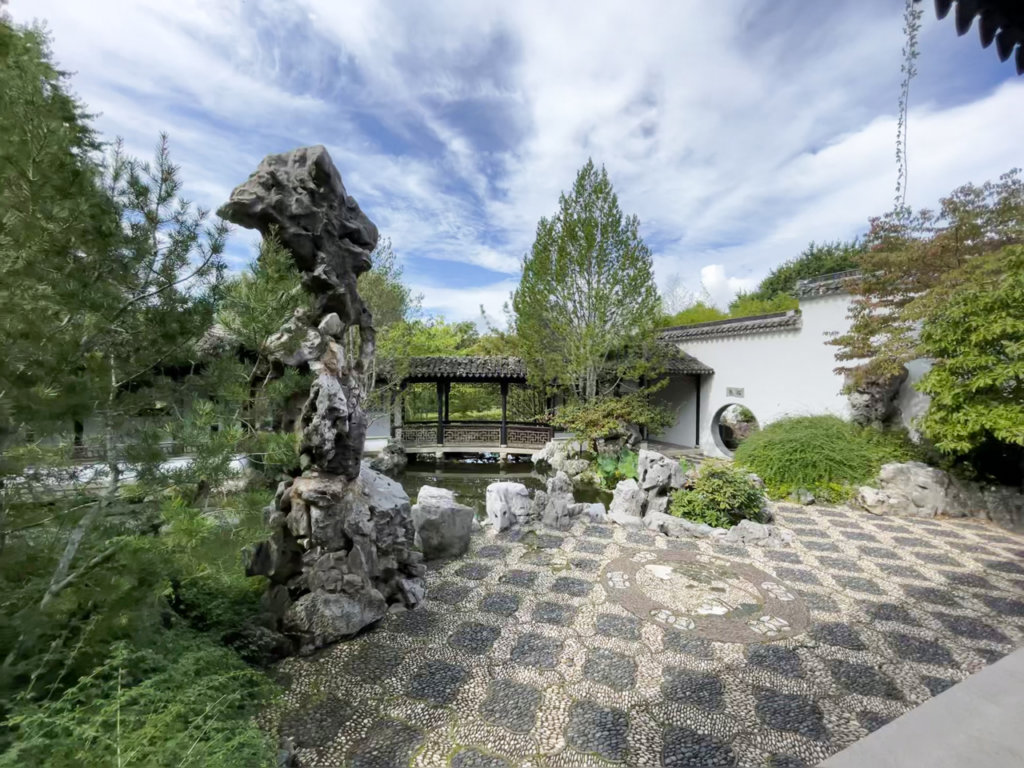
I also learned about Lingering in Clouds Peak which evokes an image of attaining lofty heights.
The New York Chinese Scholar’s Garden is located inside Snug Harbor Cultural Center & Botanical Garden, which is also the site of the Staten Island Museum and the Staten Island Children’s Museum, so a solid full day or more could be made out an excursion.
- Address: 1000 Richmond Terrace, Staten Island, NY
- See hours and admission
- How to get there: Staten Island Ferry to St. George Ferry Terminal. S40 to Richmond Terr./Snug Harbor Rd. S44 bus to Henderson Ave./Westbury Ave.
24. Explore Little Sri Lanka in Staten Island
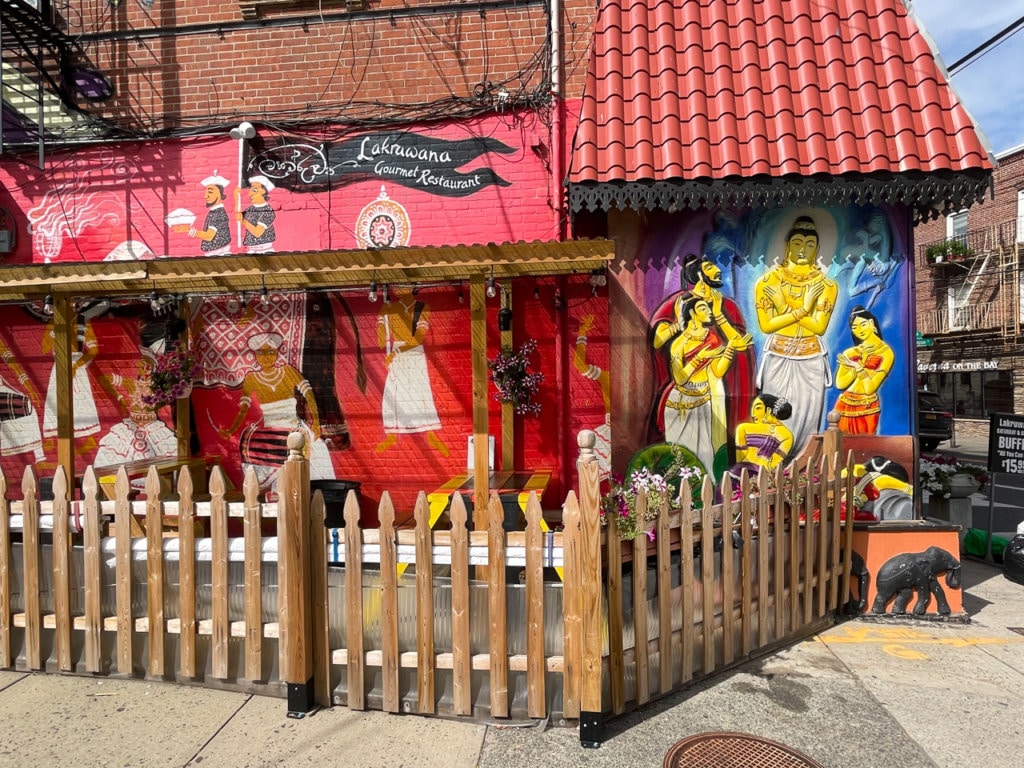
If you’re on the island, it’s the ideal opportunity to learn about Sri Lankan culture at the many establishments that make up Little Sri Lanka.
Searching for inner peace?
Visit Staten Island Buddhist Vihara, which was started by Sri Lankan Buddhists and is open for weekly meditation classes.
Curious about the country’s rich history?
Head to the Sri Lankan Art and Cultural Museum, which displays art and artifacts from Sri Lanka, which is an island nation located in the Indian Ocean.
The museum was founded by Julia Wijesinghe, who also happens to be the General Manager of Lakruwana, a Sri Lankan restaurant serving up traditional fare such as spicy lamprais wrapped in a banana leaf. The restaurant is owned by her father Lakruwana Wijesinghe and has been around since 1995.
What have I missed? I’m all about seeking out the non-touristy places in my city, so don’t hesitate to let me know your favorites!
Final Thoughts on Non-Touristy Things to Do in New York City
New York City is home to some of the most famous landmarks in the world and in my opinion, every one of them is worth a visit. But to really get to know the city in a more intimate way, you have to get adventurous and explore the neighborhoods and attractions that many tourists visit.
That adventurous spirit will lead you to a different version of the city, more of an off-the-beaten-path NYC. You’ll discover residential neighborhoods, cozy parks, and unique museums you’ll never forget.
When you’re planning your NYC vacation, don’t forget to leave time for paths less traveled!
Like this post? Pin it and save for future reference!
